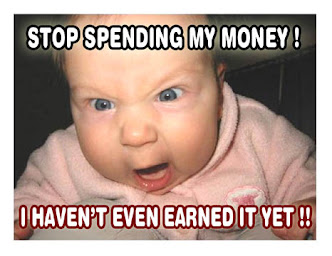JUMPING BACK INTO THE VAT
Back in October, I wrote a post in The Ripley Report about the Value Added Tax. I'm reposting it, because it is still relevant, seven months later. There is an addition to the post, though.
According to the trial balloon the administration is floating lately about the VAT, it would be set at about 5%. Don't expect it to stay that way very long. Let's not forget that the federal Income Tax started at 1%. European countries have VATs of about 20% or more.
The fact that Nancy Pelosi is enthusiastic about the idea - and has been for a while - is nothing short of frightening. Public opinion and the good of the country mean nothing to that woman. If she wants the tax, she will move heaven and earth, break arms, bribe, threaten and browbeat to get what she wants. Anyone who doubts that need look no further than the health care "debate".
Without further ado, here's the Ripley Report on the VAT:
Thursday, October 8, 2009
JUMPING INTO THE VAT
House Speaker Nancy Pelosi, on PBS's 'The Charlie Rose Show' Monday, said, "Somewhere along the way, a Value Added Tax plays into the - of course we want to take down the health care cost, that's one part of it, but in the scheme of things, I think it's fair to look at a Value Added Tax as well."
So what is a value added tax, anyway?
Well, the short answer is that it is a consumption tax that is added at each stage of production according to the value added to the product and included in the cost to the consumer.
The long answer? VAT is common around the world, and ranges from 5% all the way up to 25%, and would effect every good purchased. According to the Washington Post,
"a 25 percent VAT could do it all: Pay for health-care reform, balance the federal budget and exempt millions of families from the income tax while slashing the top rate to 25 percent. A gallon of milk would jump from $3.69 to $4.61, and a $5,000 bathroom renovation would suddenly cost $6,250, but the nation's debt would stabilize and everybody could see a doctor."
So a VAT would pay for our many entitlements, but we would feel it every time we purchased something. Don't forget, that VAT is in addition to whatever state sales taxes might be applicable. This is a hefty tax, and, although it technically is levied on manufacturers, the purchasing public will really be paying the price.
This is also a major redistributive mechanism, because a VAT of between 10-14% would generate enough revenue that families making under $100,000/year (about 90% of households) would be exempt from paying income tax, and even those in high tax brackets would enjoy a slight reduction in tax rates. Provided, of course, that the greedy little piggies at the Washington trough allow exemptions and reductions. I don't recommend you hold your breath on that one.
They will most likely attempt to spin it as a tax on all those mean old corporations who are - gasp - profiting from their endeavors. How dare they?! Businesses aren't supposed to make dirty old money, they're supposed to take care of us and give us stuff and be really, really nice and...hey, is that a unicorn peeping out from behind that pretty rainbow?
Back in the real world that all of us outside of D.C. have to live in, a VAT means that, while they can technically say with a straight face that this isn't a tax on the middle class, this is a tax on the middle class, and a big one, at that.















0 comments:
Post a Comment